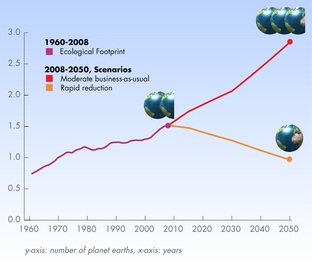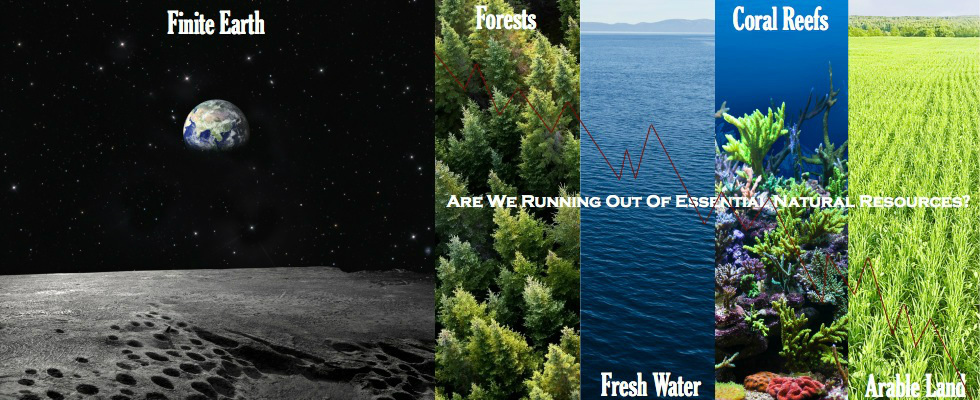
Finite Earth
Despite massive landscapes and endless blue, our planet is limited in its resources and capabilities to support its inhabitants. According to the
Global Footprint Network, "Humanity uses the equivalent of 1.5 planets to provide the resources we use and absorb our waste. This means it now takes the Earth one year and six months to regenerate what we use in a year. Moderate UN scenarios suggest that if current population and consumption trends continue, by the 2030s, we will need the equivalent of two Earths to support us. And of course, we only have one. Turning resources into waste faster than waste can be turned back into resources puts us in global ecological
overshoot, depleting the very resources on which human life and biodiversity depend." As
Annie Leonard puts it, "It seems impossible that we are consuming an amount equivalent to more than the total resources produced by the planet each year. In fact, it's only possible because the planet's been around much longer than we have and has had time to accumulate extra." All over the world we are witnessing the effects of using more resources than the Earth can provide in the form of
diminishing forest cover,
disappearing coral reefs,
collapsing fisheries
,
biodiversity decline,
increasing greenhouse gases,
depleting fresh water systems,
acidifying oceans, disease, famine, mass migrations,
depleting arable land, resource conflicts and wars, just to name some of the more noticeable effects. Traditionally, when faced with the challenge of resource depletion, countries and industries would simply focus their needs elsewhere, but those who can no longer afford or discover such trajectories, such as the
fishing
and
oil
industry, are left to cope with limited resources or pursue unconventional methods, which can create a disproportionate impact on the poor, and the ones that can are finding that even the furthest and deepest corners of the Earth are being exploited, leaving fewer and fewer resources for future generations. The only true, long-term solution to resource depletion is pursuing and measuring
sustainability.
Learn more.
What happens when an infinite-growth economy runs into a finite planet?
View Webpage | Download PDF
If everyone lived the lifestyle of the average American we would need 5 planets. How many planets does it take to support your lifestyle?
Fresh Water
Discover the amount of freshwater left on Earth and the ensuing global water crisis.
Forests
Discover the remaining forest cover around the world and the last frontier forests.
Arable Land
Discover the percentage of arable land per country and the total land area for three different types of land use.
Coral Reefs
Discover the rates at which coral reefs are disappearing and why.
| |
Stellar Journey of Ecological Consciousness

This is likely the most reproduced and viewed picture in history. This famous photograph was taken on December 7, 1972, by the crew of Apollo 17 spacecraft at a distance of about 45,000 kilometers. Viewing the fully lit Earth as a whole against an endless sea of blackness is a stark reminder that we are all in this together. This wonderful photograph shares with us Earth's beauty, it's limitations and the reminder that our dwellings are but rooms inside the home that is Earth. Let's zoom out a little. Image Credit: NASA/DIGITAL | Click to enlarge
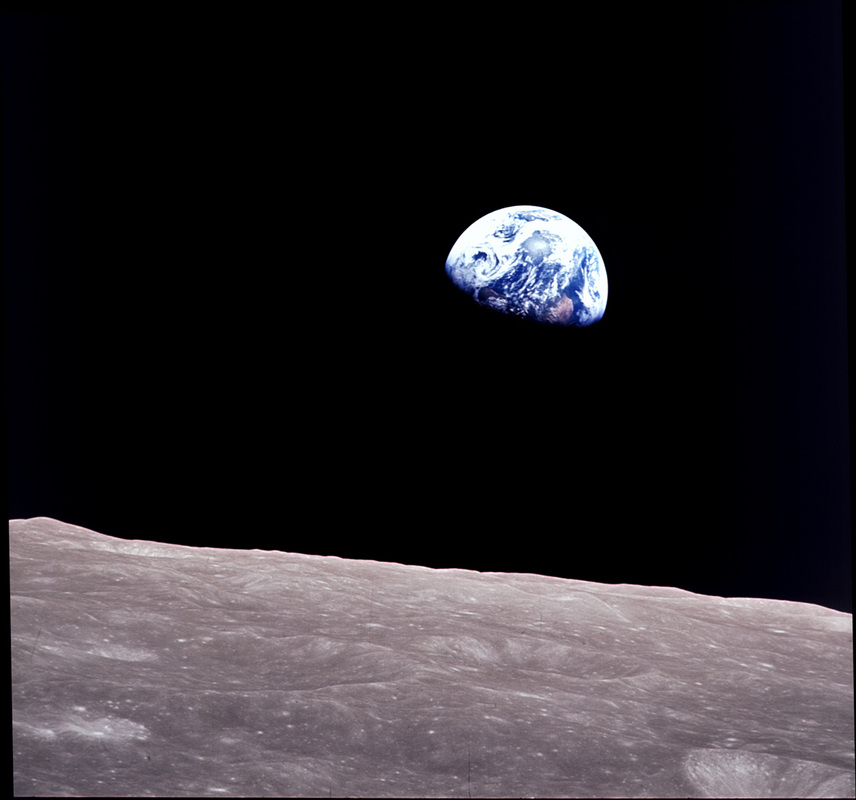
Taken from the moon by Apollo 8 on December 24, 1968, this breathtaking photograph is yet another reminder that we have only one planet that we must take care of. It is our home, our aspirations, our families, our livelihoods, our futures and the only source of life in the known universe. Let's travel 4 billion miles further. Image Credit: NASA | Click to enlarge
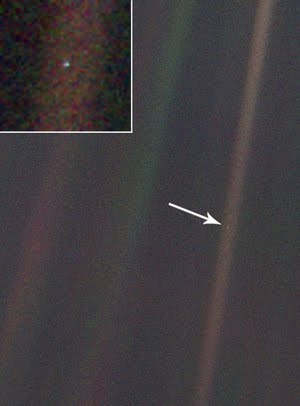
Taken by NASA in 1990 by the Voyager 1 spacecraft, the Earth is shown as a mere speck in the vastness of space. Somewhere in that speck you are sitting right now reading this on a rare life-support system floating in the infinitude of space. This pale blue dot is all we have. Image Credit: NASA/JPL | Click to enlarge
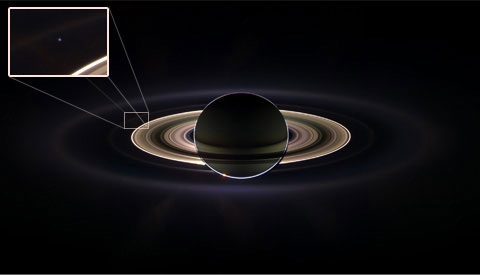
"A recent photo from the Cassini spacecraft shows the mighty planet Saturn, and if you look very closely between its wing-like rings, a faint pinprick of light. That tiny dot is Earth bustling with life as we know it. The image is the second ever taken of our world from deep space. The first, captured by the Voyager spacecraft in 1990, stunned many people, including the famous astronomer Carl Sagan who called our seemingly miniscule planet a "pale blue dot" and "the only home we've ever known."" ~ NASA. Image Credit: NASA/JPL/Space Science Institute | Click to enlarge
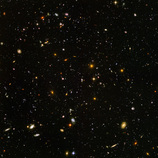
The breadth of the universe defies the imagination. Physicists say we are mere stardust created through billions of years of explosions and evolution. They say within us lies the story of the universe. Reflecting on the stars reminds us how truly tiny our planet is and the rarity of life it is able to sustain. Image Credit: NASA, ESA, and S. Beckwith (STScI) and the HUDF Team | Click to enlarge
| |
"The Living Planet Report is the world's leading, science-based analysis on the health of our only planet and the impact of human activity. Its key finding? Humanity's demands exceed our planet's capacity to sustain us. That is, we ask for more than what we have. Nature is the basis of our well-being and our prosperity. Biodiversity has declined globally by around 30 percent between 1970 and 2008; by 60 percent in the tropics. demand on natural resources has doubled since 1966 and we are currently using the equivalent of 1.5 planets to support our activities. High-income countries have a footprint five times greater than that of low-income countries. Areas of high biodiversity provide important ecosystem services such as carbon storage, fuel wood, freshwater flow and marine fish stocks. “Business as usual” projections estimate that we will need the equivalent of two planets by 2030 to meet our annual demands. Natural capital - biodiversity, ecosystems and ecosystem services – must be preserved and, where necessary, restored as the foundation of human economies and societies." ~ WWF
"Don't blow it - good planets are hard to find." ~Quoted in Time
| Mass Volume Mean Circumference Surface Area Density Mean Radius |
5.9722 x 1024 kg 1,083,206,916,846 km3 40,030.2 km 510,064,472 km2 5.513 g/cm3 6,371.00 km |
"Where do we stand in our efforts to achieve a sustainable world? Clearly, the past half century has been a traumatic one, as the collective impact of human numbers, affluence (consumption per individual) and our choices of technology continue to exploit rapidly an increasing proportion of the world's resources at an unsustainable rate. ... During a remarkably short period of time, we have lost a quarter of the world's topsoil and a fifth of its agricultural land, altered the composition of the atmosphere profoundly, and destroyed a major proportion of our forests and other natural habitats without replacing them. Worst of all, we have driven the rate of biological extinction, the permanent loss of species, up several hundred times beyond its historical levels, and are threatened with the loss of a majority of all species by the end of the 21st century." ~
Peter Raven, former President of the American Association for the Advancement of Science (AAAS), in
AAAS Atlas of Population & Environment

